It has been a good year for art exhibits on abstraction so far. Last summer, the
Guggenheim Museum mounted a show entitled "Art of Another Kind: International Abstraction and the Guggenheim, 1949-1960," and this summer returns with another show drawing from its rich holdings in abstract art with "New Harmony: Abstraction between the Wars, 1919-1939," which I went to see last week. The
Museum of Modern Art held its "Inventing Abstraction, 1910-1925" from December 2012 to April of this year, which the art journal
October examined extensively this past winter in its "Abstraction: A Special Issue" edition (No. 143). Sunday is the final day to see "Brothers and Sisters," a sprightly exhibit focusing on the conversation
Beauford Delany's (1901-1979) abstract works open up with those of other 20th and 21st century black artists, ranging from
Jack Whitten and
Alma Thomas to
Glenn Ligon and
Julie Mehretu. And certainly there are many more exhibits across the city.
One I dropped by last night was "Reinventing Abstraction: New York Painting in the 1980s," curated by New York-based artist and scholar Raphael Rubinstein, at Cheim & Read gallery. Rubinstein's focus is on New York artists born between the chronological window of 1939 and 1949 who were painting in the 1980s, the decade now mostly associated with movements such Neo-Expres-bsionism, Appropriation Art, Neo-Geo, identity-based art, and so on. As Rubinstein notes in his rationale for the exhibit, these artists, in their 30s and 40s during this moment, were not so much concerned with a "'return to painting'" as with "finding a bridge between the radical, deconstructive abstraction of the late 1960s and 1970s...with a larger painting history and more subjective approaches."
From including elements excluded in the prior decade, such as a return to a conventional rectangular support, to allusions to figuration and landscape painting, to allusions drawn from art history and the wider culture, these works mark an important shift in New York abstract painting practice, yet it remains that case that these artists and their work still have not received extensive critical treatment or been regularly shown together, thus Rubinstein's show, which is not just expertly mounted, but instructive and generative in the conversations it opens up between and among the works. From the inclusion of biomorphic imagery to contestations with the frame to the presence of autobiography to attempts to counter the strong influence Color Field painting, these works suggest and point to shared challenges, struggles and achievements that suggest a new stage in abstraction that subsequent generations of painters in New York and elsewhere have built on.
Moreover, the works themselves harmonize with each other, not in mirroring or echoing fashion, but in their often consonant visual grammars and approaches. One question a viewer might ask is given how extensive abstract painting in 1980s New York was, why such a small show, and Rubinstein's response is that he wanted to zero in on a "specific generation" that contributed to it. As he says, his titling of the exhibition was inspired by painter Carrie Moyer, "who, writing about Stephen Mueller in 2011, identified his as 'the generation that reinvented American abstract painting.'" That may be too tendentious a gesture, but Rubinstein's show does succeed in showing that Moyer's statement does have real basis in fact, which is to say, in the persuasive, beautiful, provocative works themselves. Some photos from the Cheim & Read exhibit, and a few from the "New Harmony" exhibit at the Guggenheim.
At Cheim & Read:
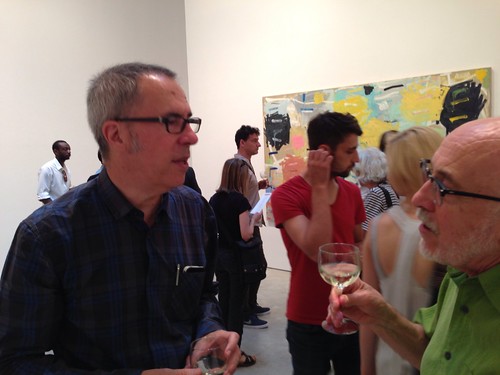 |
| Raphael Rubinstein (l) chatting with artist Gary Stephan (r) |
 |
| Joan Snyder, Beanfield with Music, 1984 |
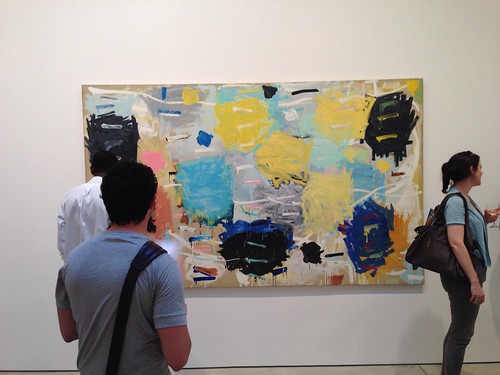 |
| Stanley Whitney, Sixteen Songs, 1984 |
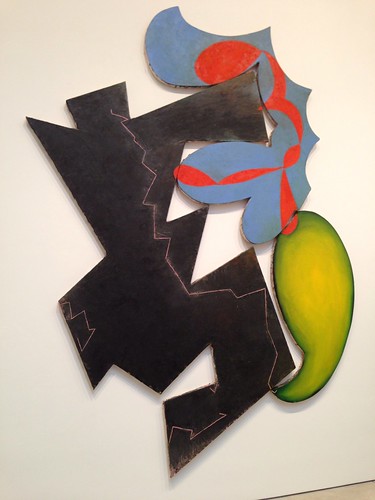 |
| Elizabeth Murray, Sentimental Education, 1982 |
 |
| Thomas Nozkowski, Untitled (6-30), 1988 |
 |
| Terry Winters, Point, 1985 |
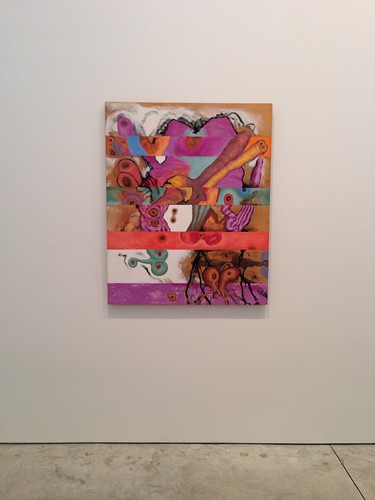 |
| Carroll Dunham, Horizontal Bands, 1982 |
And at the Guggenheim:
 |
| Frantisek Kupka, Form of Blue, 1925 |
 |
| Lászlo Moholy-Nagy, All, 1984 |
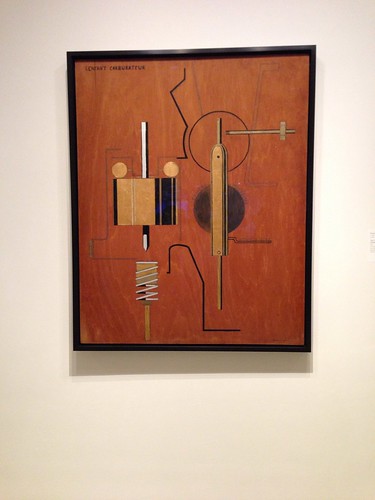 |
| Francis Picabia, The Child Carburetor, 1919-1939 |
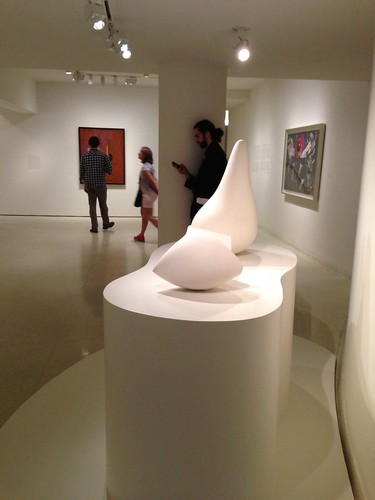 |
| In the galleries, Guggenheim Museum |





















No comments:
Post a Comment